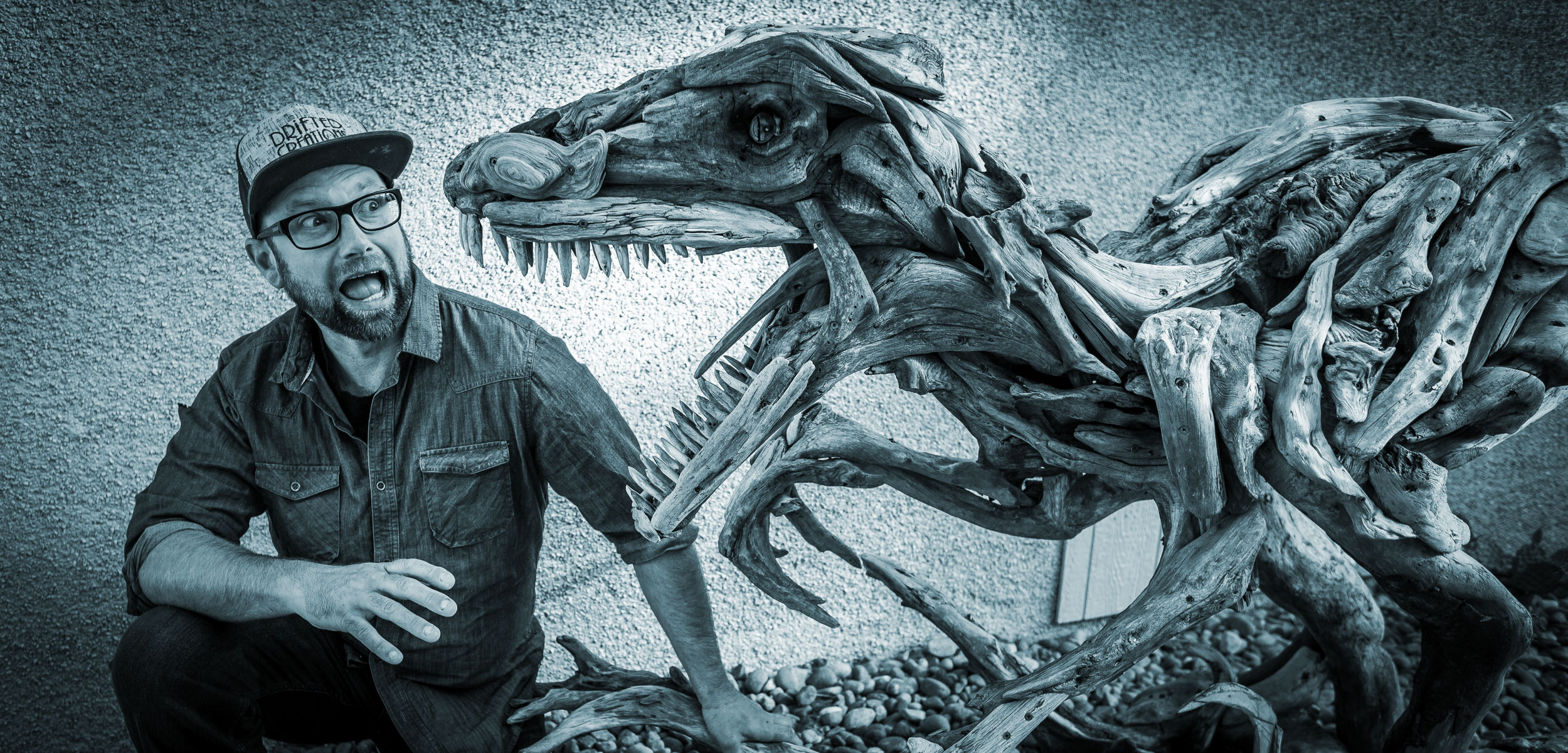Coastal Job: Driftwood Artist
Alex Witcombe walks the wrack line, searching for distinctive pieces of driftwood to transform into storied sculptures.
Article body copy
Some people work in cubicles, others work in kitchens, but the most intriguing workplace of all may be the coast. Meet the people who head to the ocean instead of the office in our Coastal Jobs series.
In 2016, Alex Witcombe launched Drifted Creations after his first driftwood sculpture received a deluge of praise from the public. Today, the artist, who is based on Vancouver Island, British Columbia, makes public art pieces and does commissions for a variety of clients. He also runs workshops to help others learn the coastal craft.
While walking the beaches of British Columbia, I’ve always seen stuff in the driftwood: oh, there’s a dinosaur bone; oh, there’s a triceratops skull. A few years ago, I just decided to build a velociraptor on the beach. It took me about four hours, and she was four meters long and two meters tall. I named her Sheila.
Somebody made a video and it went viral. People loved her. She stood there for three months until the winter storms came and rocked her pretty hard. I posted on Facebook that I was taking her down and returning her bones to the beach, and somebody said they’d like to have her and donate money to my next project. It just propelled from there, and now creating driftwood sculptures is my full-time job.
The beach is the best studio ever. I love the water and the life and the persistent movement and action. The smell gets me every time. I’m out in nature. I’m playing with nature. I’m making something cool out of natural materials. And I’m just immersed in the elements. I’ve been out building sculptures in 60-kilometer winds and sideways rain, and I’ve still had a grin on my face.
I start out with an idea, find a reference photo, and walk the beach looking for the right pieces. It’s like a treasure hunt. I’m always searching for character pieces with twists and knots, and for durable woods, which I’ve learned to identify from their weight, density, and even smell. Every piece of wood has a story. About 70 percent of my time goes into collecting wood—I use hundreds of pieces for the big sculptures, which I usually build in one go in a few hours. I start by making a frame with driftwood and then attach the pieces with nails and screws.
I’ve done commissions for a wide variety of individuals and organizations across Canada, including cities, resorts, and restaurants. Coastal animals are very popular: I’ve done eagles, orcas, wolves, bears, seals, and salmon. The smallest piece I’ve done is a 20-by-25-centimeter orca for an airport display; the largest is a life-size wooly mammoth for a development at a site where mammoth remains were found in the 1960s.
One of my main focuses is public art. I love giving back to the community and adding enjoyment to people’s lives. My most memorable experience was when Fergus the Fox was stolen from his home along a walking trail. The local radio station and newspaper covered his disappearance, and the tourism office put missing posters all over the city. It morphed into a large community affair, and it was really neat to see how many people were enjoying Fergus and were worried about him. Eventually, he was returned to the parking lot of the park. He was a little worse for wear—one of his ears had fallen off—but he’s been rehabilitated and is now awaiting reintroduction into the forest. He’s going to have a buddy with him, another fox, so they can back each other up.

